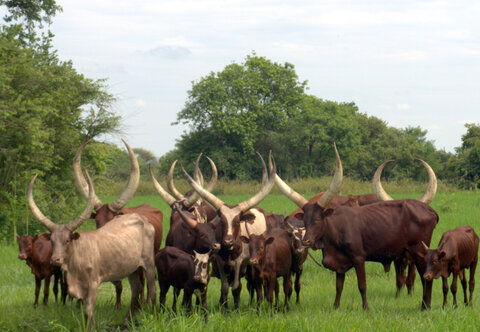Will treating cattle with insecticide protect them from tsetse and trypanosomiasis?

The insecticides applied to cattle to control tsetse are not repellents (Baylis et al., 1994; Vale et al., 1999). Consequently, they do not prevent directly tsetse from biting cattle . However, each fly that bites - or even touches - a treated animal will die within a few hours. Hence, if enough cattle are treated then the population of tsetse will be reduced, cattle will be bitten less and the incidence of trypanosomiasis will decrease. Ultimately, if there are no tsetse in an area, then there will be no trypanosomiasis.
The first upshot of this is that at the beginning of a control operation, animals will continue to be infected with trypanosomiasis. An obvious decrease in disease incidence will only occur after a few months, when the number of tsetse has declined.
Second, cattle at the edge of a control operation that is near a tsetse-infested area, will be continuously infected by tsetse invading the controlled area. This is a common problem for livestock and people living near conservation areas such as national parks. Even in these settings however, treating cattle with insecticide reduces the numbers of tsetse and hence risk of human and animal trypanosomiasis (Lord et al., 2020). To obtain even better control, it may be necessary to deploy insecticide-treated targets at the interface of farming and conservation areas.
Third, farmers sometimes treat their cattle in the mistaken belief that the insecticide repels tsetse. If this is their only reason for doing so, then they are probably wasting their money. Treating cattle with insecticides to control trypanosomiasis should always be part of a large-scale tsetse control operation.
Farmers may also be treating their cattle with insecticides to control ticks or other ectoparasites. Advising livestock owners about the use of insecticides should take account of these pests.
References
Baylis, M. Mbwabi, A.L. & Stevenson, P. (1994) The feeding success of tsetse flies, Glossina pallidipes Austen (Diptera: Glossinidae) on oxen treated with pyrethroid pour-ons at Galana Ranch, Kenya. Bulletin of Entomological Research 84, 447-452.
Vale, G.A., Mutika, G. & Lovemore, D.F. (1999) Insecticide-treated cattle for controlling tsetse flies (Diptera: Glossinidae): some questions answered, many posed. Bulletin of Entomological Research 89, 569-578.
Lord, J.S., Lea, R.S., Allan, F.K., Byamungu, M., Hall, D.R., Lingley, J., Mramba, F., Paxton, E., Vale, G.A., Hargrove, J.W., Morrison, L.J., Torr, S.J. and Auty, H.K. (2020) Assessing the effect of insecticide-treated cattle on tsetse abundance and trypanosome transmission at the wildlife-livestock interface in Serengeti, Tanzania. PLOS Neglected Tropical Diseases 14(8): e0008288. https://doi.org/10.1371/journal.pntd.0008288